ISOLDE
Kofoed-Hansen and Nielsen produce short-lived radioactive isotopes
Danish physicists Otto Kofoed-Hansen and Karl-Ove…
Know more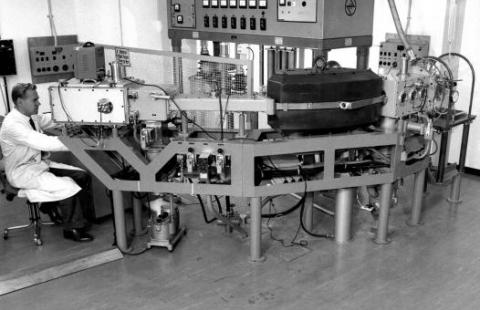
Plans for an isotope separator are published
(image: The isotope separator in 1960) Plans for…
Know moreCERN approves the online separator project
On 10 April 1963, a number of European nuclear…
Know more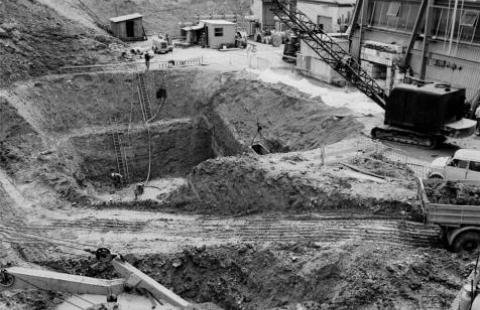
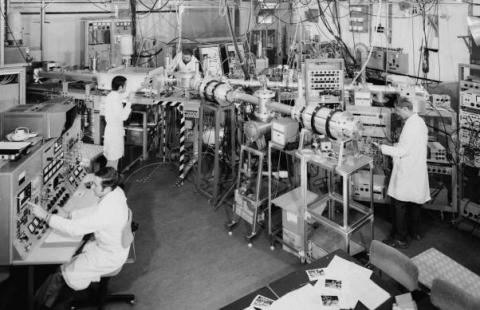
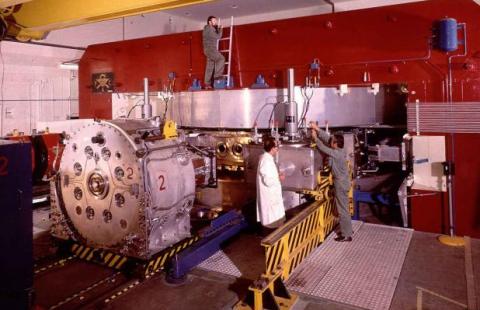
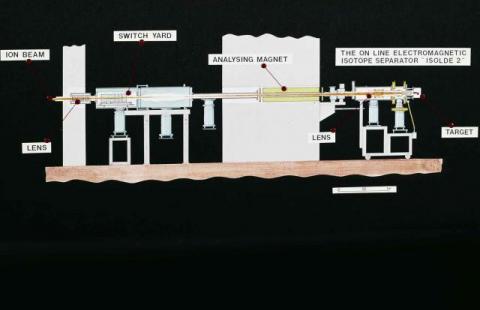
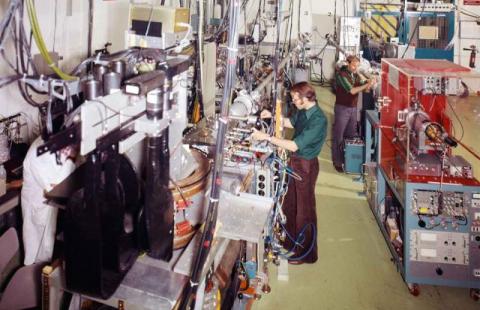
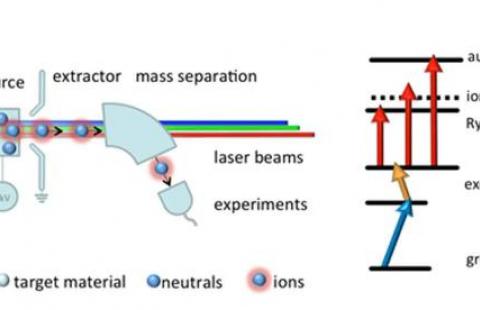
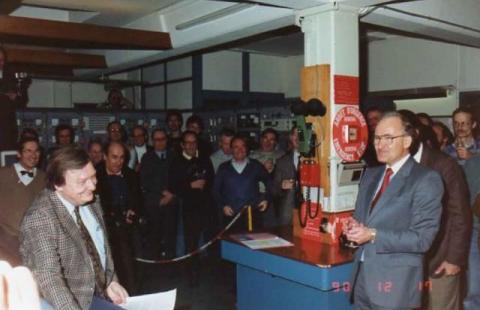
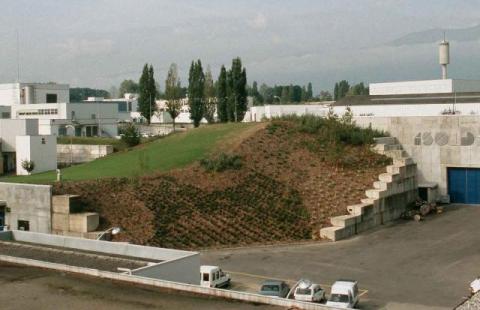
First experiment at the ISOLDE Proton-Synchrotron Booster
First experiment at the ISOLDE Proton-Synchrotron…
Know more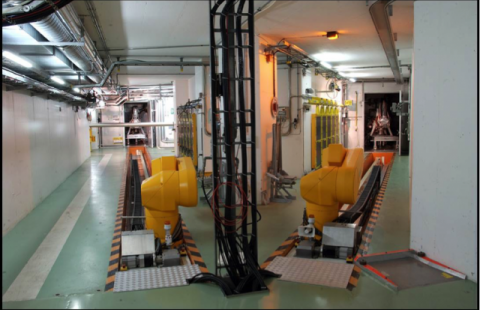
First use of robots for target interventions
Industrial robots are installed for manipulation…
Know more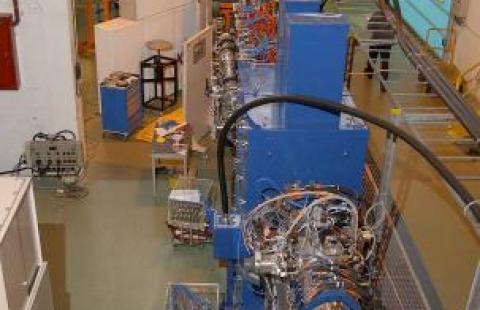
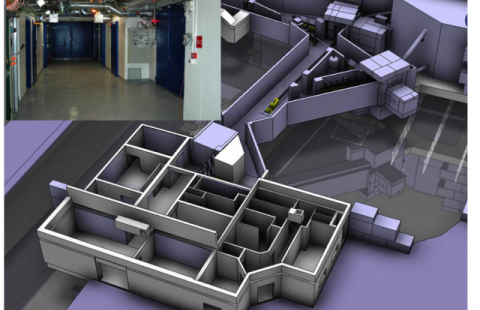
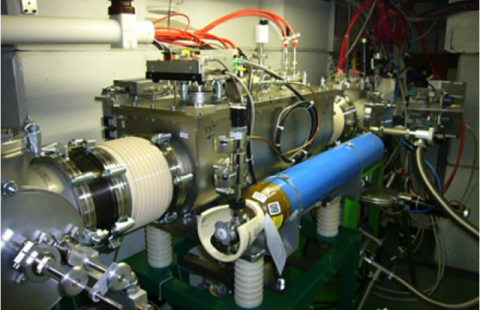
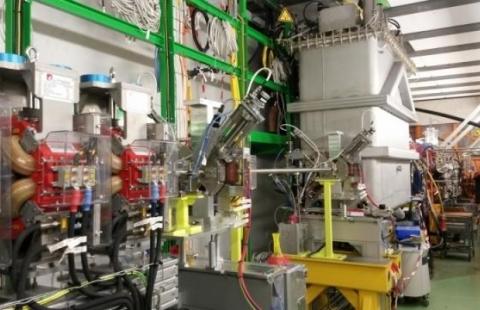
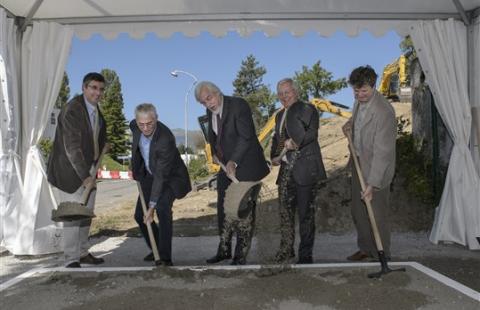
First observations of short-lived pear-shaped atomic nuclei
An international team at the ISOLDE facility…
Know moreISOLDE success culminates in three Nature publications
In the middle of 2013 the success of combined…
Know moreThe ISOLTRAP collaboration measures the mass of exotic calcium nuclei
The ISOLTRAP collaboration publishes in the…
Know moreISOLDE capable of producing radioactive ion beams from 74 chemical elements
Radioactive ion beams from many chemical elements…
Know moreFirst radioactive isotope beam accelerated in HIE ISOLDE
CERN's nuclear physics facility, ISOLDE,…
Know moreNew CERN facility can help medical research into cancer
The new CERN-MEDICIS (Medical Isotopes Collected…
Know moreISOLDE reports about the shape of mercury isotopes' nuclei
ISOLDE reports about a phenomenon unique to…
Know more
Embed this timeline
Kofoed-Hansen and Nielsen produce short-lived radioactive isotopes
Danish physicists Otto Kofoed-Hansen and Karl-Ove Nielsen, working at the Institute for Theoretical Physics at the University of Copenhagen, are first to demonstrate how to produce radioisotopes with an on-line technique. In a paper entitled Short-lived Krypton isotopes and their daughter substances Kofoed-Hansen and Nielsen demonstrate the feasibility of on-line production of short-lived radioactive isotopes.
They used fast neutrons, produced in the Copenhagen cyclotron in an internal Be target, to bombard a uranium oxide target. The produced fission products arre swept directly into the ion source of an isotope separator. This direct coupling of the accelerator, target and separator gives access to isotopes with shorter half-lives than any earlier indirect production method.
Plans for an isotope separator are published
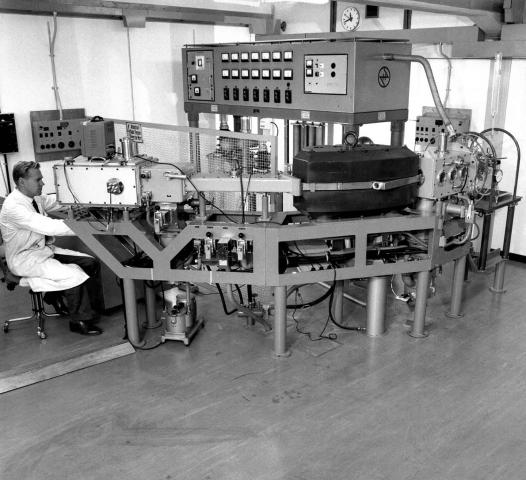
(image: The isotope separator in 1960)
Plans for an isotope separator are published in the proceedings of the International Symposium held in Vienna, May 1960. This isotope separator is built by CERN's Nuclear Chemistry Group (NCG) and used to measure the production rate of radionuclides produced in different targets irradiated with 600 MeV protons from a CERN Synchrocyclotron (SC) beam. Researchers observe high production rates showing that the SC would be the ideal machine for setting up a dedicated experiment for on-line production of rare isotopes.
CERN approves the online separator project
On 10 April 1963, a number of European nuclear physicists meet at CERN to discuss the isotope separator project. A first outline is presented in an internal nuclear physics division report.
A Working Party is set up and a series of meetings are held from May to September. In a memorandum dated 26 October 1964 the chairman of the Nuclear Structure Committee Torleif Ericson recommends the on-line isotope separator project to CERN and on 9 November the Working Party submit a formal proposal.
On 17 December 1964 the Director-General gives formal permission to the groups behind the proposal to carry out the experiment.
Synchrocyclotron shuts down
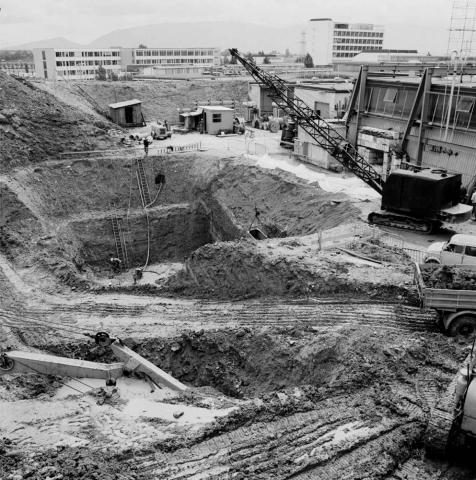
(image: excavation work for ISOLDE underground hall in 1966)
On 8 May 1966, the CERN Synchrocyclotron begins a long shutdown until mid-July. During this time major modifications are carried out as part of a programme to improve the capacity of the machine and its associated facilities. One of the main items of work during the shutdown is the construction of a new tunnel for an external proton beam line to the new underground hall for the ISOLDE experiments. This tunnel is constructed underground to keep external radiation levels down and the existing proton room is kept for experiments that use beams of lower intensity.
First proton beams at ISOLDE
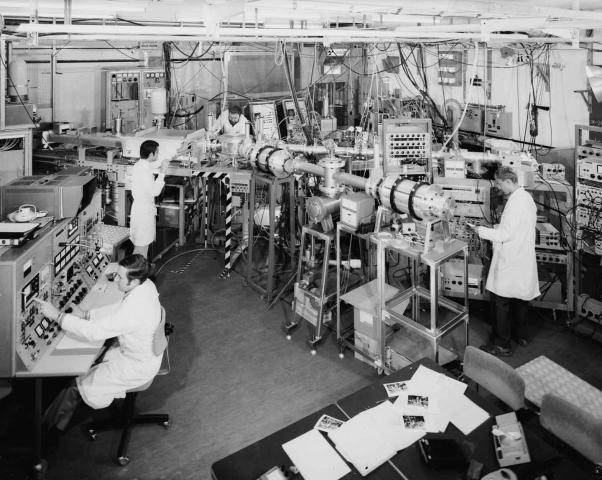
(image: ISOLDE experimental hall. The magnet of the ISOTOPE separator, the collection chamber and the control desk were placed in the same area as most of the experiments.)
The underground hall for ISOLDE is ready in 1967 and the first proton beam bombards the target on October 16. The first experiments are successful and prove that the online technique meets the expectations of the experimentalists. During the next year, a number of experiments produce short-lived isotopes of a several elements. The first paper is published early in 1969 and presents results for short-lived isotopes of the noble gases Ar, Kr, Xe and Rn and several other elements like Ag, Cd, I, Pt, Au, Hg, Po and Fr.
Plans to shut down the Synchrocyclotron
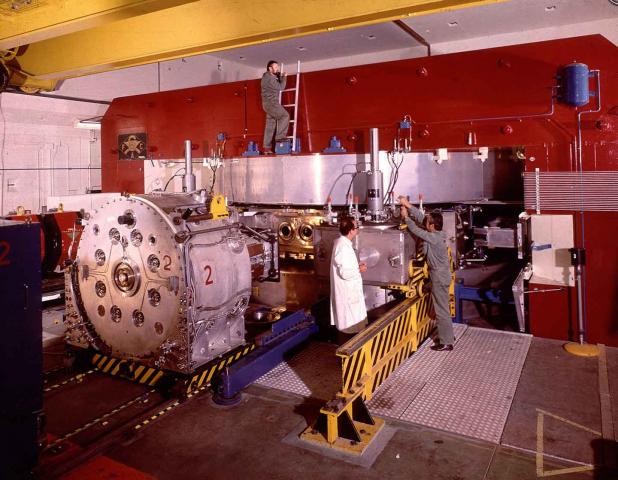
(image: The Synchrocyclotron with the rotating condenser )
The Synchrocyclotron (SC) is shut down for a major reconstruction in 1972, called the SC Improvement Programme (SCIP). An important part of the upgrade of the SC is to change the frequency system from one based on a tuning fork to a rotating condenser. The extraction system of the beam to ISOLDE is also improved, which means a beam intensity of about two orders higher can be delivered to the ISOLDE target.
First beams for ISOLDE target
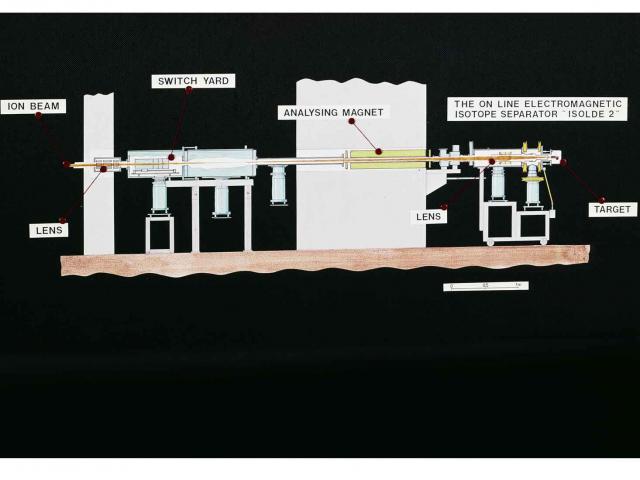
(image: The ISOLDE II experimental area)
In March 1974, the SC improvement programme is completed and the first beams are directed towards the ISOLDE targets.
The intensity increase of the external beam up to 1 μA together with new target designs hold their promises and give a considerable increase in the number of isotopes available for experiments.
A new target design and a new layout of the isotope separator is implemented. The target-ion-source unit is placed in the proton beam and the magnet of the isotope separator is placed close to the target. The separated isotopes are then directed towards the experimental setups via a switchyard, which allows researchers to experiment with isotopes of different mass numbers simultaneously.
The first experiment at the reconstructed ISOLDE Facility was performed on March 11, where a target-ion-source system for production of neutron deficient Cs isotopes was used to detect combined beta-delayed proton and alpha emission for the neutron deficient Cs isotopes with mass numbers 118 and 120.
New experiments in ISOLDE II
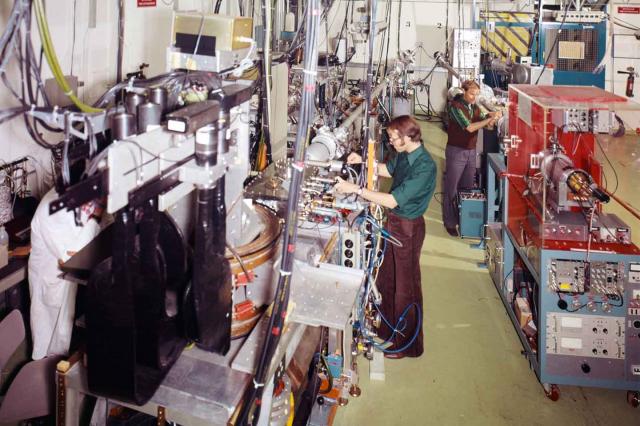
New experiments are installed at ISOLDE II and placed at the three main beam-lines. The photo shows the underground hall UR8 on April 6 1976, which only housed experimental installations. The control desk could be found one floor above.
ISOLDE III design is approved
To maximize the use of the Synchrocyclotron (SC) beam time and to meet the requests from the growing physics community using ISOLDE, the ISOLDE collaboration decides to build a second isotope separator of ultra-modern design. The separator design uses a two-stage separation (one 60 degree and one 90 degree magnet) in order to obtain a very high resolution. The target is placed in the SC vault and after the second magnet, the ion beam enters the proton hall, which serves as the new experimental area.
ISOLDE III, is approved at the CERN Research Board session in June 1983 and the final approval to start building the new separator is taken on 10 November of the same year.
The laser ion source, RILIS, is developed
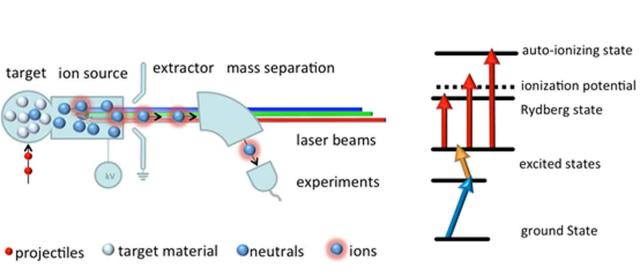
(image: The basic principle of the RILIS technique: Two laser beams tuned to transitions between atomic levels - blue and yellow arrows - excite the atoms and a third beam induces the ionization)
The traditional ion sources used at ISOLDE were based on surface ionization and ionization in a plasma. These techniques together with different target matrices gave a large variety of beams for more than 20 years. A major step in improving the purity of and the number of available elements came in 1989 with a new technique based on laser ionization.
A combination of laser beams at wavelengths tuned to the sequence of atomic transitions enables highly efficient resonance excitation and ionization of selected atoms. Isotopes of other elements of the same mass do not interact with the laser radiation. This type of ion source is referred to as a Resonance Ionization Laser Ion Source (RILIS) and is a very powerful tool for the efficient and selective production of radioactive ion beams. The initial off-line RILIS development is then followed by its successful on-line application for laser ionization of ytterbium isotopes at ISOLDE-III on 10 October 1990.
The Synchrocyclotron beam ends
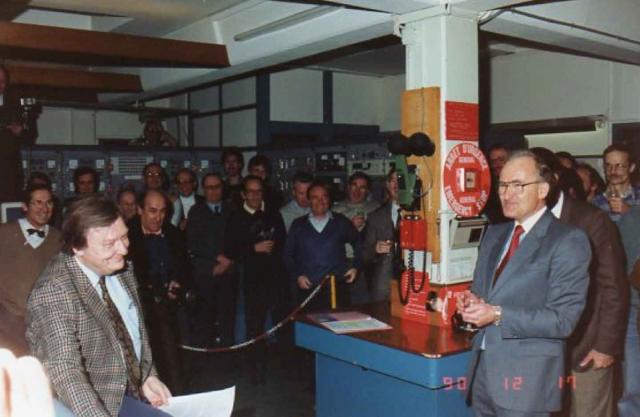
On 19 December 1990, at noon, the beam from the Synchrocyclotron (SC) is stopped. At the end of the eighties the decision was taken to shut down the SC.
The ISOLDE programme should, however, continue at CERN and new facility will be built for an external beam from the Proton Synchrotron Booster.
Inauguration of the new ISOLDE PSB facility
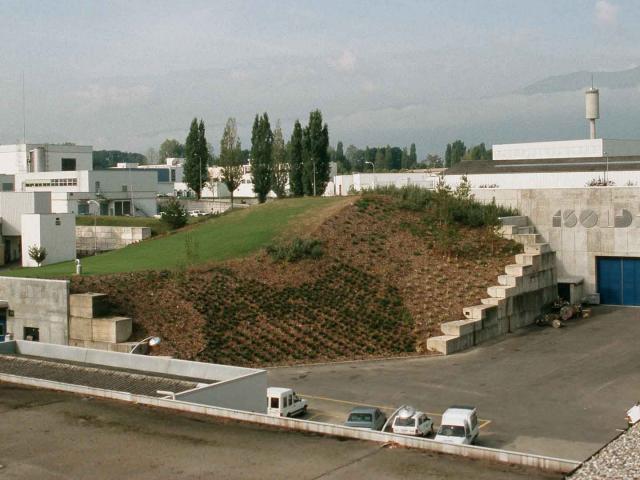
The new ISOLDE PSB Facility has two isotope separators, a general-purpose separator with one magnet (GPS) and a high-resolution separator with two magnets, similar to the ISOLDE III design. The target handling in the facility is fully automatized with robots.
First experiment at the ISOLDE Proton-Synchrotron Booster
First experiment at the ISOLDE Proton-Synchrotron Booster.
The first experiment was carried out on June 26, where the beta-proton decay of the neon isotope with mass number 17 was studied. This experiment was relevant for the understanding of nuclear halo structure, first proposed at ISOLDE.
First use of robots for target interventions

Industrial robots are installed for manipulation of ISOLDE targets, which allows all target changes and manipulations of used target-ion-source systems to be made without human intervention.
New accelerator, REX-ISOLDE, goes live
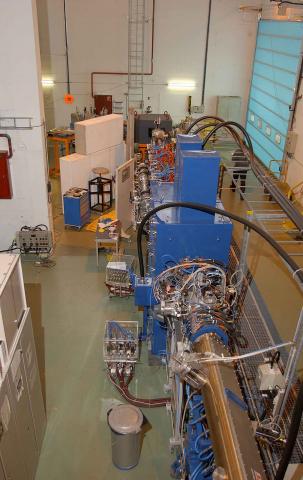
A new accelerator, REX-ISOLDE, is put into operation on 31 October 2001. This post-accelerator has opened up new fields of research using radioactive ion beams of higher energies. REX-ISOLDE can provide post-accelerated nuclei covering the whole mass range from He to U for reaction studies and Coulomb excitation with energies up to 3 MeV/u. To this day, REX has accelerated over 100 isotopes of more than 30 different elements.
Radioactive laboratory of class A at ISOLDE
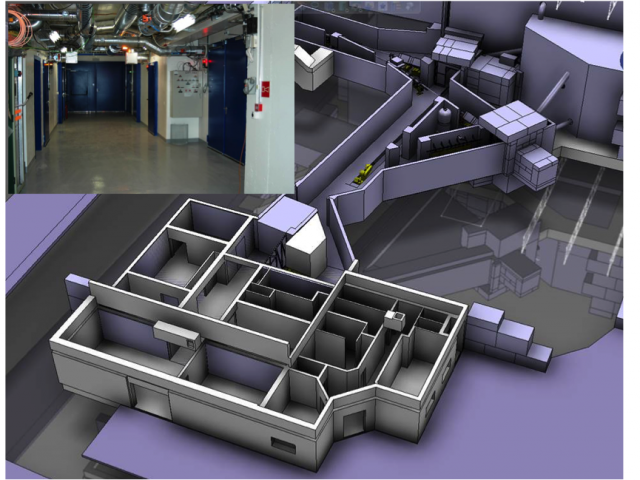
(Image: A 3-D drawing of the Class A Lab with a photo inset)
The new Class A building at ISOLDE is built to enable UCx target material to be produced and irradiated targets to be handled safely. The Class A laboratory is equipped with fume cupboards, full protective measures and aerosol monitoring. It can handle 150 g UO2 per day, corresponding to two target containers.
ISCOOL, the RFQ Cooler and Buncher
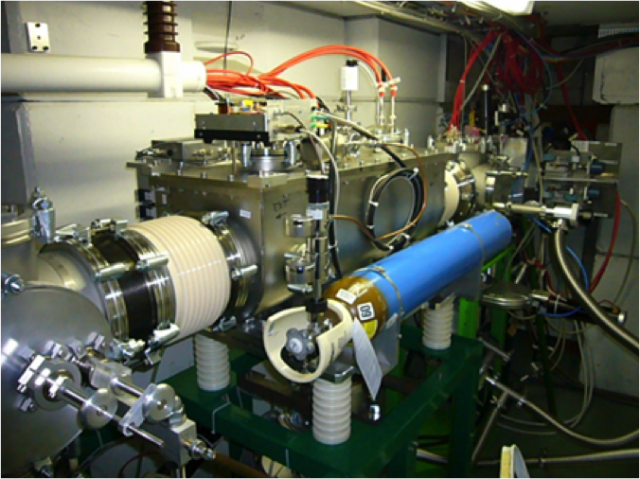
(Image: ISCOOL, an ion cooler and buncher installed at ISOLDE)
An ion cooler and buncher, ISCOOL, is installed in the HRS section of ISOLDE. Beams with strongly reduced emittances and energy spreads are now available for all experiments downstream the beam line.
Using its bunching capabilities, ISCOOL permits an increase in the sensitivity for experiments such as those devotde to collinear laser spectroscopy. The first physics run with this device took place in July 2008 where the isotope 77Ga (T1/2=13 s) was studied with the COLLAPS laser spectroscopy setup.
HIE-ISOLDE project approved
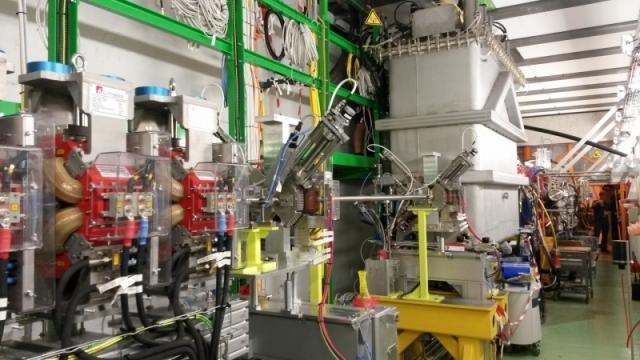
(Image: The ISOLDE beamline, equipped with the first HIE-ISOLDE cryomodule in its light grey cryostat)
The HIE-ISOLDE project is a major staged upgrade of the existing ISOLDE facility. It includes an energy increase of the REX post-accelerator up to 5.5 MeV/u with a future option of going to 10 MeV/u, as well as an upgrade of the REX low energy stage capacity. The beam quality will be improved e.g. with the installation of a RFQ cooler and a new Resonant Laser Ionization System. The driver intensity will be increased from the new Linac-4 and upgrades in the intensity and energy of the PS Booster.
Approval of the CERN-MEDICIS project
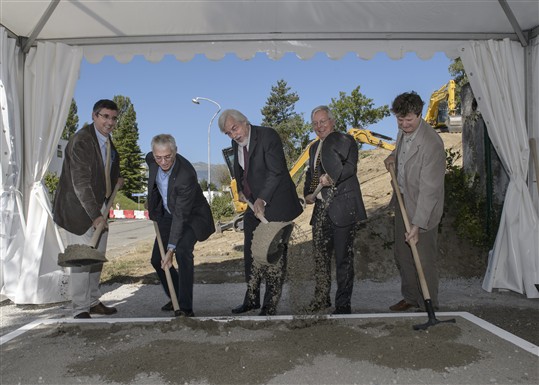
(Image: Groundbreaking for the CERN-MEDICIS building. From left - R. Meuli, Chef du Département de Radiologie Médicale, CHUV, D. Hanahan, Director, Swiss Institute for Experimental Cancer Research R. Heuer, Directeur général, CERN Y. Grandjean Secrétaire général, HUG P. Piet Van Duppen, Nuclear Spectroscopy Group, Katholieke Universiteit Leuven. Credit: Maximillien Brice/ CERN)
CERN-MEDICIS will use the primary proton beam at ISOLDE to produce radioisotopes for medical research. A second target will be placed after the one at ISOLDE as the high energy proton beam only deposits 10% of its intensity and energy when traversing the standard type of ISOLDE target and thus the protons passing through the target can still be used. An automated conveyor will then carry this second target to the CERN-MEDICIS infrastructure, where the radioisotopes will be extracted.
First observations of short-lived pear-shaped atomic nuclei
An international team at the ISOLDE facility showed that some atomic nuclei can assume asymmetric, "pear" shapes. The observations contradict some existing nuclear theories and will require others to be amended. Published in the journal Nature, a technique pioneered at ISOLDE was used successfully to study the shape of the short-lived isotopes Radon 220 and Radium 224.
Most nuclei have the shape of a rugby ball. While state-of-the-art theories are able to predict this behaviour, the same theories have predicted that for some particular combinations of protons and neutrons, nuclei can also assume asymmetric shapes, like a pear. In this case there is more mass at one end of the nucleus than the other.
In contradiction with some nuclear theories, Radium 224 is pear-shaped, Radon 220 does not assume the fixed shape of a pear but rather vibrates about this shape.
Such exotic atoms with pear-shaped nuclei could help with the searches for electric dipole moments (EDMs), that is the separation of positive and negative charges within the atom.
ISOLDE success culminates in three Nature publications
In the middle of 2013 the success of combined technical and physical efforts was demonstrated in three papers published in Nature within the space of one month.
The acceleration of the hitherto heaviest post-accelerated beams, 220Rn and 224Rn and detection of gamma rays from Coulomb excitation in the MINIBALL Germanium detector array showed octupole deformed (pear-like) shapes of the nuclei (Nature 497 (2013) 199).
With the very successful mass spectrometer ISOLTRAP the mass of the exotic nuclide 54Ca was determined. The mass systematics confirmed the existence of a new magic number N=32 and provides a validation of three-body forces using chiral perturbation theory (Nature 498 (2013) 346).
In a high-precision study via Rydberg states with the laser ion-source (RILIS), the ionisation potential for the element Astatine, the least abundant chemical element on earth, was determined (Nature Communications 4 (2013) 1835).
The ISOLTRAP collaboration measures the mass of exotic calcium nuclei
The ISOLTRAP collaboration publishes in the journal Nature the mass of exotic calcium nuclei using a new instrument installed at the ISOLDE facility. The results cast light on how nuclei can be described in terms of the fundamental strong force.
The ISOLTRAP team used the ISOLDE facility to make exotic isotopes of calcium, which has the magic number of 20 protons in a closed shell. Their goal was to find out how the shell structure evolves with increasing numbers of neutrons. Standard calcium with 20 neutrons is doubly magic, and a rare long-lived isotope has 28 neutrons – another magic number.
Now, the ISOLTRAP team has determined the masses of calcium isotopes all the way to calcium-54, which has 34 neutrons in addition to the 20 protons. The measurements not only reveal a new magic number, 32, but also pin down nuclear interactions in exotic neutron-rich nuclei.
Explore resources for the media.
ISOLDE capable of producing radioactive ion beams from 74 chemical elements
Radioactive ion beams from many chemical elements are produced at ISOLDE and more than 1000 Radioactive Ion Beams (RIBs) are available for the users. With a Carbon nanotube target the element boron could be produced as a RIB for the first time and the isotope 8B (T1/2=770 ms) could be observed. With this addition to the palette of ISOLDE beams the Facility can now provide beams from 74 chemical elements to the user community.
First radioactive isotope beam accelerated in HIE ISOLDE
CERN's nuclear physics facility, ISOLDE, began producing ion beams at higher energies. The first cryomodule of the new HIE-ISOLDE (High-Intensity and Energy ISOLDE) accelerator is up and running, increasing the beam energy from 3 to 4.3 MeV per nucleon.
These first beams are the result of eight years of development and manufacturing. The assembly of this first cryomodule presented CERN’s teams with numerous technical challenges. It contains five accelerating cavities and a solenoid magnet that focuses the beam, all of which are superconducting. The cavities were particularly complex to build, and the cryomodule is made up of no fewer than 10 000 components! It was transported to the ISOLDE hall on 2 May and coupled to the existing accelerator. The commissioning began in the summer, culminating in the acceleration of the first radioactive beam on 22 October.
New CERN facility can help medical research into cancer

The new CERN-MEDICIS (Medical Isotopes Collected from ISOLDE) facility produced radioisotopes for medical research for the first time. These radioisotopes are destined primarily for hospitals and research centres in Switzerland and across Europe.
“Radioisotopes are used in precision medicine to diagnose cancers, as well as other diseases such as heart irregularities, and to deliver very small radiation doses exactly where they are needed to avoid destroying the surrounding healthy tissue,” said Thierry Stora, MEDICIS project coordinator. “With the start of MEDICIS, we can now produce unconventional isotopes and help to expand the range of applications.”
The first batch produced was Terbium 155, which is considered a promising radioisotope for diagnosing prostate cancer.
Explore resources for the media.
ISOLDE reports about the shape of mercury isotopes' nuclei

ISOLDE reports about a phenomenon unique to mercury isotopes where the shape of the atomic nuclei dramatically moves between a football and rugby ball. Isotopes with extreme neutron to proton ratios are typically very short-lived, making them difficult to produce and study in the laboratory. The experiment reproduced one of ISOLDE’s flagship results of 40 years ago. The result showed that although most of the isotopes with neutron numbers between 96 and 136 have spherical nuclei, those with 101, 103 and 105 neutrons have strongly elongated nuclei, the shape of rugby balls. Several theories had tried to describe what was happening, but none was able to provide a full explanation.
Using one of the world’s most powerful supercomputers, theorists in Japan performed the most ambitious nuclear shell model calculations to date. These calculations identified the microscopic components that drive the shape shifting; specifically, that four protons are excited beyond a level predicted by expectations of how other stable isotopes in the nuclear landscape behave. These four protons combine with eight neutrons and this drives the shift to the elongated nuclear shape. In fact, both nuclear shapes are possible for each mercury isotope, depending on whether it is in the ground or excited state, but most have a football shaped nucleus in their ground state. The surprise is that Nature chooses the elongated rugby ball shape as the ground state for three of the isotopes.
Explore resources for media.